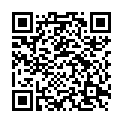|
|
|
| Module code: E2307 |
|
|
2V (2 hours per week) |
|
2 |
| Semester: 3 |
| Mandatory course: yes |
Language of instruction:
German |
Assessment:
Project work
[updated 08.01.2020]
|
E2307 (P211-0098) Electrical Engineering and Information Technology, Bachelor, ASPO 01.10.2018
, semester 3, mandatory course, technical
|
30 class hours (= 22.5 clock hours) over a 15-week period.
The total student study time is 60 hours (equivalent to 2 ECTS credits).
There are therefore 37.5 hours available for class preparation and follow-up work and exam preparation.
|
Recommended prerequisites (modules):
None.
|
Recommended as prerequisite for:
|
Module coordinator:
Prof. Dr. Martin Buchholz |
Lecturer: Prof. Dr. Martin Buchholz
[updated 10.09.2018]
|
Learning outcomes:
After successfully completing this course, students will be able to select a suitable calculation tool for a given engineering task. - They will know how to use MATLAB and Simulink for solving mathematical problems numerically and simulating systems. - Students will be able to apply MATLAB´s vector- and matrix-based approach to given examples. - They will be able to use MATLAB and Simulink to generate, process and evaluate signals and systems. - Students will be able to process data using MATLAB and Simulink, as well as display and analyze simulation or measurement results. - They will be capable of applying their knowledge to image and audio signal processing. - Students will understand the possibilities of and methods used by LABVIEW for simulation and lab work. - They will have acquired the basic knowledge necessary for taking part in other modules where these engineering tools are applied in a more subject-specific manner.
[updated 08.01.2020]
|
Module content:
1. MATLAB´s user interface 2. Working interactively with the basic elements and functions in MATLAB 3. Programming in MATLAB: scripts and functions 4. Representing measurement results in 2D and 3D graphics 5. File operations 6. Signal processing with MATLAB 7. Image processing with MATLAB 8. Symbolic math 9. Introduction to Simulink 10. Signal processing with Simulink 11. Introduction to LABVIEW
[updated 08.01.2020]
|
Teaching methods/Media:
Lecture notes, smartboard, PC with MATLAB and LABVIEW classroom license
[updated 08.01.2020]
|
Recommended or required reading:
Bode, Helmut: MATLAB-SIMULINK: Analyse dynamischer Systeme, Teubner, 2006, 2. Aufl. Bosl, Angelika: Einführung in MATLAB/Simulink, Hanser, (latest edition) Georgi, Wolfgang; Metin, Ergun: Einführung in LabVIEW, Hanser, (latest edition) Grupp, Frieder: Simulink: Grundlagen und Beispiele, Oldenbourg, 2007, ISBN 978-3-486-580914 Hoffmann, Josef; Quint, Franz: Signalverarbeitung mit Matlab und Simulink: Anwendungsorientierte Simulationen, Oldenbourg, 2007 Kammeyer, Karl-Dirk; Kroschel, Kristian: Digitale Signalverarbeitung Filterung und Spektralanalyse mit MATLAB-Übungen, Springer Vieweg, (latest edition) Werner, Martin: Digitale Signalverarbeitung mit Matlab, Intensivkurs mit 16 Versuchen, Vieweg + Teubner, (latest edition)
[updated 08.01.2020]
|


